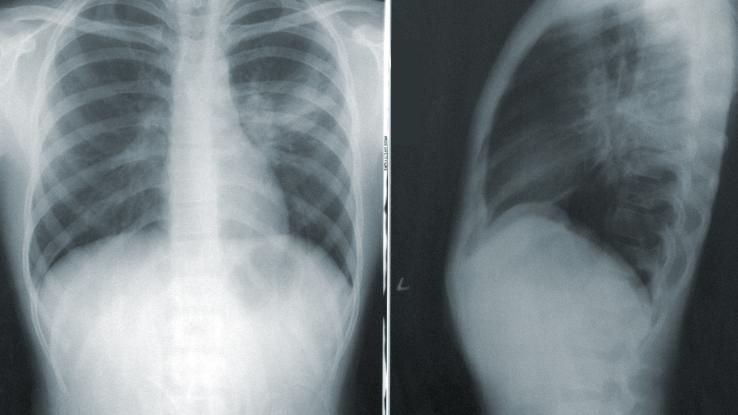
Emphysema and chronic bronchitis are commonly grouped into one category and referred to as chronic obstructive pulmonary diseases, or COPD, by most physicians. According to the American Lung Association (ALA), COPD is one of the leading causes of death in the United States. Here, we’ll take an in-depth look at these two forms of COPD and how to live with them. For starters, let’s define both emphysema and chronic bronchitis.
Emphysema: Emphysema describes the damaged air sacs in a person’s lungs, which causes them to lose their elasticity. These air sacs are vital for the exchange of oxygen that’s inhaled from the air and the carbon dioxide in one’s blood. Eventually, damage to these air sacs results in permanent fissures in the tissues of a person’s lungs. The end result of emphysema is a limited air supply, which causes a person to frequently feel out of breath, especially during physical activity.
Chronic Bronchitis: Chronic bronchitis is defined as coughing for three months in two consecutive years. Moreover, it occurs when the airways to one’s lungs are damaged and lose their elasticity. This often occurs due to long-term smoking, but it can also stem from genetic factors. The affected airways limit the amount of air being passed, resulting in a hoarse cough. The cough then causes an excess of mucus that further blocks the airways, resulting in constant shortness of breath, wheezing, and chest tightness.
Causes of Emphysema and Chronic Bronchitis
Emphysema and chronic bronchitis are so closely related that they have been placed into one category — COPD. Physicians will often refer to both diseases as COPD since one disease often accompanies the other. The reason for this? In all likelihood they are caused by the same thing: smoking cigarettes.
Cigarette smoking is the leading cause of COPD, although long-term exposure to other airborne irritants, such as dust, pollution, and chemical fumes, may also cause this condition. However, according to the ALA, approximately 85 to 90% of all COPD deaths are related to smoking. This is why it is so important to quit smoking as soon as possible if you start to develop COPD symptoms.

Additionally, both emphysema and chronic bronchitis are gradual diseases, meaning they don’t appear suddenly like other conditions or infections. Prolonged exposure to irritants, primarily tobacco smoke, is the only way one could develop COPD.
Interestingly enough, many people who suffer from emphysema and chronic bronchitis attribute their declining health, harsh cough, incessant wheezing, and difficulty breathing to “smoker’s lung” or “smoker’s cough.” Sadly, those who ignore the signs and symptoms of COPD may visit their healthcare provider after their condition is in an advanced state, leading to life-threatening respiratory problems, and, in some cases, heart failure.
Is There a Cure for COPD?
Unfortunately, there is no cure for emphysema or chronic bronchitis to date. While COPD is a progressive disease that gradually becomes worse over time, there are still certain steps, medications, and lifestyle changes that one can implement to improve their quality of life. This includes the following:
Quit Smoking: If you smoke, it is never too late to quit. The first step that anyone should take when dealing with COPD? Quit cigarette smoking immediately. Even though one can’t undo the damage or stop the progression of COPD, they can slow or mitigate the damage done to their lungs by quitting.
Breathing Exercises: With COPD, regular breathing can become quite a task. Exercise and physical activity also become excruciatingly difficult to deal with. Those suffering from COPD can be sent to a respiratory therapist who can teach them special breathing exercises. Pursed-lip breathing and diaphragm breathing exercises won’t reverse the effects of COPD, but these techniques can make breathing easier for those suffering from emphysema or chronic bronchitis.
Lifestyle Changes: Those suffering from COPD must learn to adopt a healthier lifestyle. This includes more exercise and healthier eating habits. Many people with COPD may find any form of exercise to be quite difficult due to shortness of breath, difficulty breathing, and an overall lack of endurance. However, they must push through the pain if they wish to enhance their physical abilities.
Consult a Physician Regularly: Regular check-ups — and visiting the doctor whenever complications arise — are important when managing COPD. The biggest mistake one can make? Ignoring the signs and symptoms of COPD. With the aid of trained experts and specialists, one can manage COPD and receive the proper diagnosis and treatment so as to prevent further complications.
Resource Links:
- “Update on Clinical Aspects of Chronic Obstructive Pulmonary Disease” via The New England Journal of Medicine (NEJM)
- “Chronic Obstructive Pulmonary Disease: An Overview” via American Health & Drug Benefits, U.S. National Library of Medicine
- “Chronic obstructive pulmonary disease” via Indian Journal of Medical Research (IJMR), U.S. National Library of Medicine
- “Chronic obstructive pulmonary disease: More than meets the eye” via Annals of Thoracic Medicine, U.S. National Library of Medicine
- “Management of chronic obstructive pulmonary disease: A review focusing on exacerbations” via American Journal of Health-System Pharmacy, U.S. National Library of Medicine
- “Chronic obstructive pulmonary disease exacerbations: latest evidence and clinical implications” via Therapeutic Advances in Chronic Disease | SAGE, U.S. National Library of Medicine





